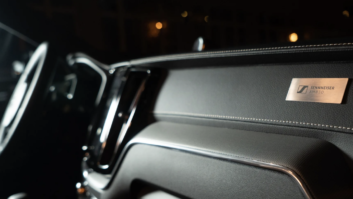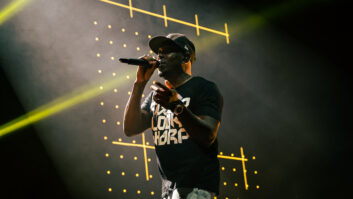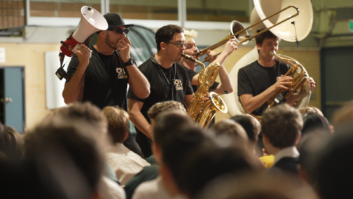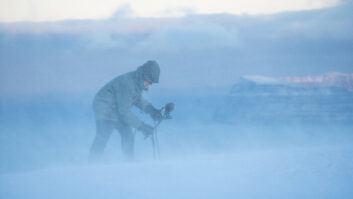Sound recordist Thomas Rex Beverly has Sennheiser to thank for accompanying him on his past three successful arctic expeditions to Alaska (2019), Iceland (2021) and Norway (2022). Sennheiser’s MKH 8020, MKH 30, MKH 8040 microphones and HD 280 PRO headphones have helped him to record and preserve the sounds of endangered species and ecosystems, including the thunderous calving of glaciers and underwater sounds of whales and other marine wildlife.
Beverly’s 90 plus nature sound libraries have been used extensively in the world of television, games, apps, museum exhibits and on high-profile film productions such as CODA, The Last of Us, Jack Ryan, Star Trek: Picard, Yellowstone and Frozen II. As a nature sound recordist and composer with over ten years of experience, Beverly explores our evolving planet through sound. Through his field recordings, music, and sound art, he inspires listeners and hopes to help preserve the precious natural landscapes and their breath-taking soundscapes for future generations.
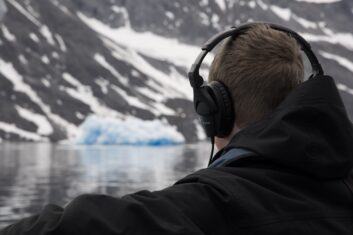 For the last eight years, Beverly has focused on field recording, with a particular passion for recording nature sounds. “I have always enjoyed being outdoors, hiking, backpacking, or mountaineering,” he said. “Field recording has allowed me to combine my passion for nature and my passion for recording. Another important part of my work is in the studio editing – there’s always a minimum of three days editing for one day of outdoor recording.”
For the last eight years, Beverly has focused on field recording, with a particular passion for recording nature sounds. “I have always enjoyed being outdoors, hiking, backpacking, or mountaineering,” he said. “Field recording has allowed me to combine my passion for nature and my passion for recording. Another important part of my work is in the studio editing – there’s always a minimum of three days editing for one day of outdoor recording.”
With him in his nature adventures is a pair of closed Sennheiser HD 280 PRO headphones. “I’ve been using them for a long time, as they offer a flat frequency response across the spectrum and great isolation,” he said. “HD 280s also hold up well outside, and I’m usually in extreme temperatures with a lot of humidity. I love the isolation as it allows me to monitor while being in the field.”
Apart from the HD 280 PRO, Beverly’s main recording rig comprises a double mid-side set-up with a Sennheiser MKH 30 figure-of-eight and two Sennheiser MKH 8040 cardioid condenser microphones.
“You have a front and a rear mic, which in my case is a pair of 8040s, and the side mic is an MKH 30. This has been my ‘go-to’ rig, as you can do everything from a close-up animal recording to recording surround sound, all in one blimp,” he enthused. “Plus, it’s a compact rig, which is important for me as I always have to think about how much gear I can actually fit in my backpack. Another benefit of a rig like this is that Sennheiser mics do really well in extreme temperatures and humidity. After having them for over six years, recording in the wild at least eight weeks of the year, they are still going strong!”
Beverly used some additional MKH 8020 mics supplied by Sennheiser specially for the Greenland expedition in spaced omni set-ups in various configurations, recording the calving of glaciers, icebergs breaking up and other unique sounds. “Apart from my Sennheiser double mid-side rig, I now also have four MKH 8020s, which I can use in spaced omni set-ups, so I’ll either use them in stereo pairs or in Quad,” he added.
For ambiance recording, for example, Beverly explains that he prefers the sound of spaced omnis, for which the MKH 8020 is perfect. As well as his Sennheiser set-up, Beverly also uses multiple recorders, hydrophones for underwater recording, and Geofones, “which are basically contact microphones that I can stick into the glacier to record some of the sub-bass sounds”.
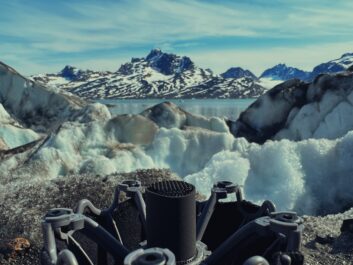 Greenland is renowned for its glaciers of all sizes across the island, with its ice sheet being the second biggest after Antarctica. Having such an abundance of beautiful arctic landscapes offered Beverly a perfect opportunity to record the unique sounds of the calving glaciers, underwater icebergs, ‘ice xylophones’, ice caves – and also a ‘mega-pack’ of 250 sled dogs howling at the arctic moon.
Greenland is renowned for its glaciers of all sizes across the island, with its ice sheet being the second biggest after Antarctica. Having such an abundance of beautiful arctic landscapes offered Beverly a perfect opportunity to record the unique sounds of the calving glaciers, underwater icebergs, ‘ice xylophones’, ice caves – and also a ‘mega-pack’ of 250 sled dogs howling at the arctic moon.
“Greenland is a magical place to record those sounds,” Beverly concluded. “With a population of just 60,000, mostly concentrated on the country’s southwest coast in the capital, Nuuk, there is very little tourism on the Eastern side of the country, so you can get to really remote areas no human has ever set foot on, which was an amazing experience!”
For the full story, click here.
